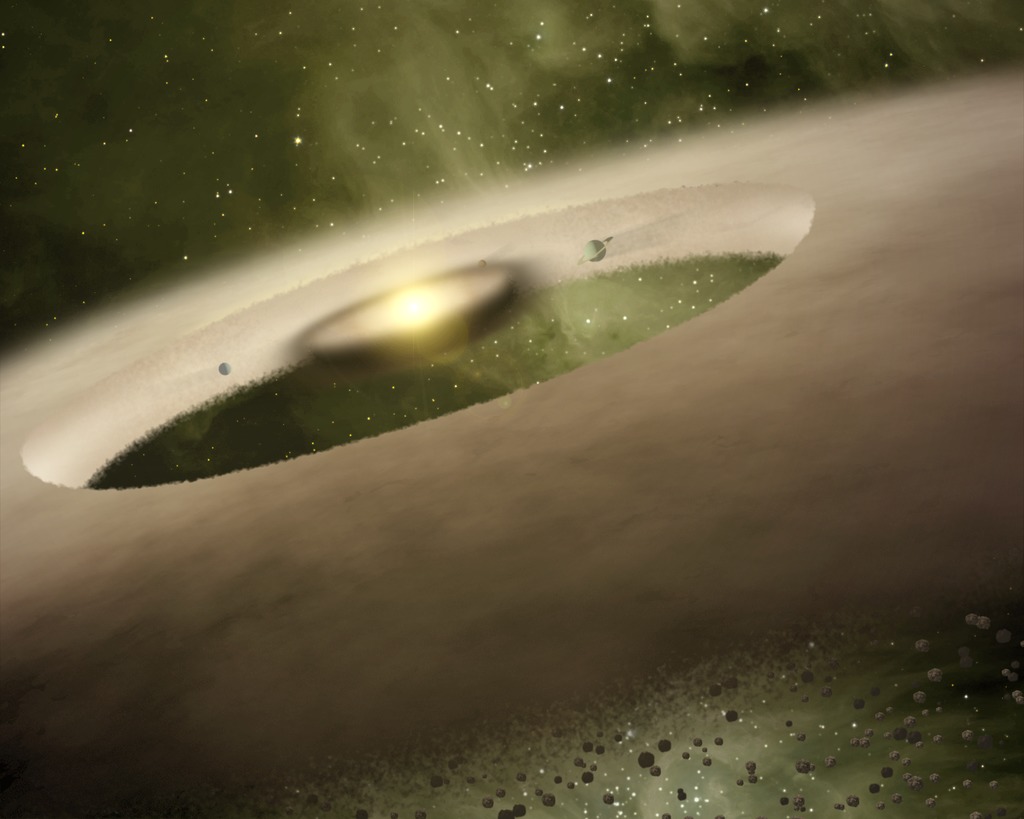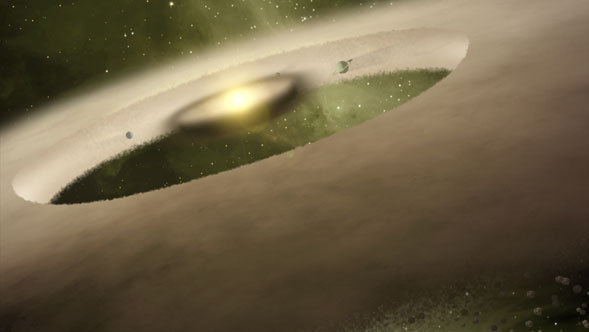
Credit: NASA/JPL-Caltech/T. Pyle (SSC)
Artwork • November 28th, 2007 • sig07-023
sig07-023
This is an artist's rendition of a stellar prodigy that has been spotted about 450 light-years away in a system called UX Tau A by NASA's Spitzer Space Telescope. Astronomers suspect this system's central Sun-like star, which is just one million years old, may already be surrounded by young planets. Scientists hope the finding will provide insight into when planets began to form in our own Solar System.
Spitzer saw a gap in UX Tau A's disk that extends from 0.2 to 56 astronomical units (an astronomical unit is the distance between the Sun and Earth). In our Solar System, this gap would occupy the space between Mercury and Pluto. Such dusty disks are where planets are thought to be born. Dust grains clump together like snowballs to form larger rocks, and then the bigger rocks collide to form the cores of planets. When rocks revolve around their central star, they act like cosmic vacuum cleaners, picking up all the gas and dust in their path and creating gaps.
About the Object
- Name
- UX Tau A
- Type
- Star > Circumstellar Material > Disk > Protoplanetary
- Star > Circumstellar Material > Planetary System
- Star > Evolutionary Stage > Main Sequence
- Distance
- 450 Light Years





